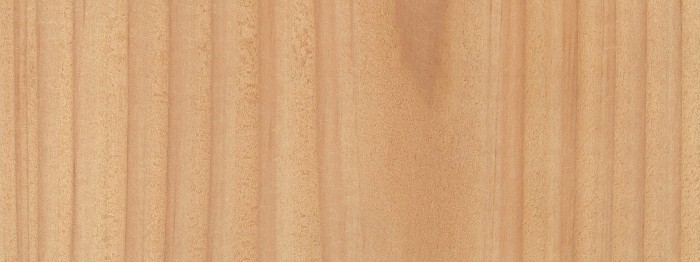
Douglas
Douglas
Originally from the west coast of North America, Douglas Fir was brought to France during the deforestation programmes after the Second World War. France is today the primary producing country of Douglas Fir in Europe, it is found mainly in the Massif Central and in Bourgogne. The Douglas Fir sapwood is yellow and its duramen brownish-pink. The grain is straight and medium.
Physical and durability properties of natural wood (besides sapwood)
- Density: 500 kg/m3 (medium heavy wood)
- Young modulus: 11,100 MPa (semi–rigid wood)
- Monnin hardness: 2.5 (softwood)
- Stability: Average
- Fungal durability and employment class: Class 3a lifespan between 50 and 100 years/class 3b lifespan between 10 and 50 years/class 4 lifespan < 10 years
Durability properties of wood impregnated by autoclave (CL3b)
- Fungal durability and employment class: Class 3b lifespan between 10 and 50 years. After treatment, this species is more resistant to termites.

Uses of the Douglas Fir species
- Structure (framing, covering, understructure)
- Siding /Cladding (after sorting of wood non-sapwood or treatment by impregnation)
- Exterior layout away from soil and without possible water retention
- Cabinetry
- Interior layout
Special features of Douglas Fir
Rather slow drying, without problem
Normal machining (risk of splinters at knot level), good adhesion, good resistance to nailing
Can be finished (Possibility of rinsing and exudation of resin)
Origin France
